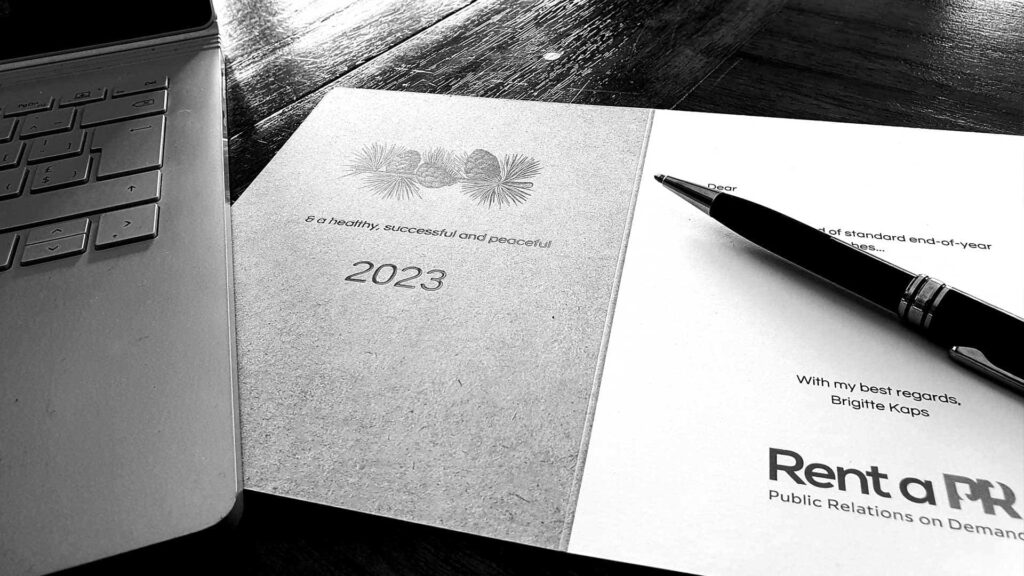It’s that time of the year again. Winter is here, and so is the flurry of year-end greetings you need to send to clients, employees, and other business stakeholders. Sending and receiving these greetings is expected and vital as it boosts morale.
Receiving similar greetings from everyone desensitises us to the joy of the holidays. It devalues what can be a valuable exercise in business communication – making the year-end greetings work towards possible collaboration in the next year.
However, have you considered the possibility that your message might exclude some of your recipients?
While more diversity in the workplace than before is an encouraging sign, it also means that one has to remember that not everyone celebrates Christmas. Businesses are considered to be secular, but at the end of the year, sending out Christmas or New Year wishes means that your employees and other recipients might not view it in the same light and could even be perceived as insensitive. Year-end wishes must be framed so that doesn’t leave anyone feeling excluded. Moreover, when a business chooses to ignore religious diversity, they give out the message that the beliefs of its recipients don’t matter.
Seasonal Affective Disorder
The end of the year also brings out Seasonal Affective Disorder in many people, even though it’s depression related to the changing seasons. For most people, SAD manifests itself mainly in the winter. Some people might have had to deal with grief, and the holidays could be sad and stressful. As a business, you need to consider the mental well-being of your employees and reach out to them if they are exhibiting signs of distress. Receiving a cheery card about year-end wishes might exacerbate their unhappiness that the world is carrying on merrily while they suffer.
The holidays are meant to be uncomplicated and fun. Still, this simple exercise of reaching out to your clients, employees, and stakeholders can become a landmine of faux pas that can be easily avoided if you keep the following communication tips in mind.
- Be aware of whom your recipients are – Sending out a mass mailer to everyone with the same stock greeting can prove problematic for the reasons mentioned above. A better way to deal with this would be to identify your recipients and send them customised greetings.
- Old school mail is better – Although emails are faster and easier to send out, posting actual cards fosters a sense of belonging and bolsters your business’s image, making you look thoughtful and considerate. Moreover, they add a sense of nostalgia, which hardly ever goes wrong.
- Avoid jokes – Sadly, not everyone has a funny bone, and what might seem like a harmless bit of fun or pun, as it may, it’s better to be on the safer side. Usually, jokes work better when delivered in person, with other contextual cues, such as tone of voice and expression, which cannot be conveyed accurately in a card.
- Personalize the card – Ensure that the card reflects your company and to that end, maybe include a picture of the employees that have been taken for this specific occasion. A season’s greeting card can reinforce the company’s brand and showcase the story you’ve been telling about your business.
- Keep it short – A card isn’t the place to report how well your company has been doing, so avoid using the minimal space present to crow about your company’s achievements. Make the message about the recipient, and ensure that the words you use to deliver that message are succinct and clear.
So, now you’ve got excellent card stock, and the design has been approved. But what will the card say, especially if you have to keep all this in mind? Here are some suggestions that might set you in the right direction.
Warm greetings from us to you
Sending you warm greetings and warm wishes for the holidays
Happy holidays and best wishes for the new year
Thank you for your continued support and business. We hope to work with you again in the coming year.
Thank you for being a part of our family. We look forward to continuing this in the coming year too.
While year-end greetings are essential in the relationship between you and your customers and employees, do remember that this is a learning curve and resolve to do better in the coming years. Becoming an inclusive and thoughtful organisation cannot happen overnight and needs time. And if you’re already thinking of making a difference, you’ve taken the crucial first step.
Happy holidays!
